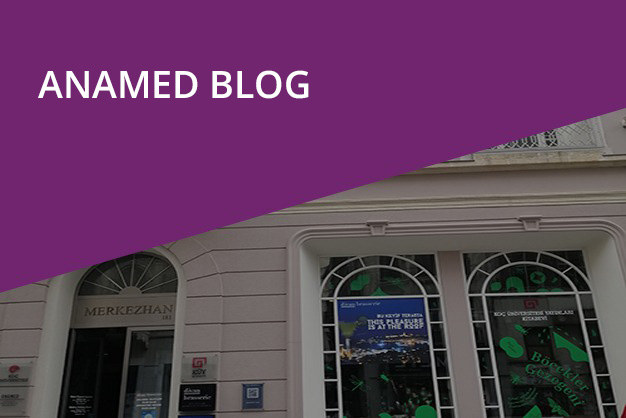
This past year (2020–2021) I have been one of two joint DAI-ANAMED research fellows on the “Humidity & Society: 8,500 years of Climate History in Western Anatolia” project. Like all of the ANAMED fellows this year, my work has, unfortunately, been conducted remotely because of the ongoing COVID-19 pandemic.
While this hasn’t been ideal, and we have all faced difficulties and missed out on the shared experience and intellectual comradery that ANAMED is famous for, research and work on the project has still managed to be productive and fruitful. For this we can be thankful to the virtual connectivity provided by modern technology such as email, Microsoft Teams, Zoom, and mobile phones—fortunately, we are not in the situation of projects in days gone by that relied on telegram, mail by post, or even traveling couriers and messengers! The weekly ANAMED “Teas”, for example, allowed fellows to “get together” and hear about and discuss each other’s work and research. The aforementioned technology has also enabled me to keep in regular contact with other members of the project and allowed us to get together to have meetings to discuss latest findings and progress, as well as future plans and directions of the project.
My main role on the project has been to analyse and interpret the δ13C data from stable isotope analysis conducted on cereal and crop seeds and wood charcoals from the three excavation projects that are involved in the “Humidity & Society” project: Barcın Höyük, Kaymakçı, and Pergamon. One of the key aims of the project is to examine palaeoclimatic and environmental conditions and related human-environment interactions in Western Anatolia from the Neolithic to the Byzantine periods. A crucial aspect in comprehending these natural and anthropogenic factors is to reconstruct and understand water availability and water management. It has been well established that δ13C values from seeds and wood charcoals can provide information about water availability during the growing cycle of plants. Thereby, by analyzing the δ13C values we can begin to reconstruct not only the relative humidity at and around sites and local regions, but also anthropogenic factors and influences, such as irrigation, crop selectivity, and field and environment management. Work on this aspect of the project is still ongoing, but preliminary analyses and observations are suggesting some very interesting patterns. Some of these preliminary findings for Kaymakçı were presented at the WANAT (“Western Anatolia in the Second Millennium BCE: Recent Developments and Future Prospects”) conference in April 2021 by Nami Shin and myself. The initial findings of the δ13C data for the overall “Humidity & Society” project will be presented by myself (co-authored along with the other members of the project) later this year at the annual ASOR (American Society of Overseas Research) meeting. I am excited to continue my work on these matters, particularly as the next phase of the project will include further biogeochemical sampling and analyses of bioarchaeological material, which will help to expand and improve the dataset.
In addition to my work on the “Humidity & Society” project, I have continued work on my own research ventures, including examining human-environment interactions, dietary habits, subsistence practices, and agricultural strategies of past populations in Anatolia and the Greater Near East. Publications related to this research should be forthcoming later this year. Along with my collaborator Bike Yazıcıoğlu-Santamaria, I have also continued to work on the development of a website and digital repository for isotopic data and research of the Greater Near East – “BioIsoANE: An Open-Access Repository of Bioarchaeological Isotopic Analysis in the Greater Ancient Near East.” This website will hopefully be online and functional by the end of the summer/early autumn 2021.
In summary, it can be said that the last year has been very productive and engaging for me, despite the difficulties associated with academic work and research in the “new normal.” There have been some very exciting developments on the project, and I look forward to continuing my work with enthusiasm and optimism, including being able to be present in İstanbul in person!

